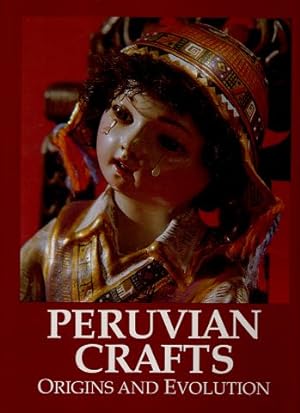About this Item
277 S., mit zahlr. farbigen Abbildungen teils auf Tafeln, Fotos, Zustand: geringe Gebrauchs- u. Lagerspuren, sehr gutes Exemplar. Text / Sprache: Englisch , A history of popular art in Peru with a consideration of traditional crafts and contemporary crafts. With 305 objects pictured in color photos., A history of popular art in Perú with a consideration of traditional.; Decorative arts - Peru. Handicraft - Peru. Folk art - Peru. Includes bibliographical references (p.265-267) María del Carmen de la Fuente; Maria Josefa Nolte; Lucy Nunez Rebaza; . [et al.], The year 1992 is a date which makes us think about our past as a nation. Five hundred years have gone by since such different cultures as the European and the American came into a contact which was more of confrontation than a meeting. Five centuries later we are still trying to understand the good and bad consequences of this cultural clash, and one of the fields in which we search for explanations of our contemporary culture is the artistic one. In it, the production of art objects which identifie Peru and which are usually qualified as crafts, is part of what we call today the Peruvian culture. The production of present day Peruvian craftsmen is one of the richest and most varied of the American continent and, possibly, of the entire world. The diversity of lines and specialties developed throughout the country is highly surprising. But most outstanding are the typical-characteristics of each craft: the meticulousness and detail of the engraved gourds from Cochas, the purity and harmony of the colors and designs of the Chinchero shawls, the beauty of the Cuzquenan "burnt" silver, the cultural complexity of the "retablos" from Ayacucho and the exquisiteness of the Huamanga stone carvings. In this same way, we could go on and on describing the wonders of thousands of artifacts of our craftmanship. These artifacts, sold today in several countries, many of which are mass produced in what is called craft industry, enclose within themselves an ancient history that goes back to the first settlers of the land we now know as Peru. Some of these objects are of recent development, such as the alpaca wool sweaters whose knitting began in the Puno highlands in the 1960's, while others, like the engraved gourds, were apparently first manufactured in Huaca Prieta 3,500 years ago, thus becoming one of Peru's most ancient crafts. Some of these artifacts have remained culturally pure, but the majority of them have gradually changed over the years to include a mixture of various cultural elements, of which the most important is since 1492, the combination of the prehispanic and Spanish cultures. For many who at the height of the twentieth century observe these beautiful artifacts, they seem to be only decorative elements, appreciated for their beauty and technique but whose past is almost unknown. They are unaware that the majority of these ceramic pieces, gourds, images and textiles were in their time important 6936 Sprache: Englisch Gewicht in Gramm: 1850 30,5 x 24 cm, gebundene Ausgabe, Hardcover/Pappeinband, Seller Inventory # 6574
Contact seller
Report this item
![]()
